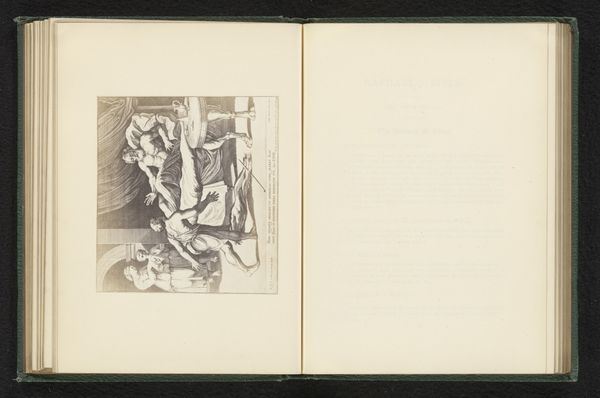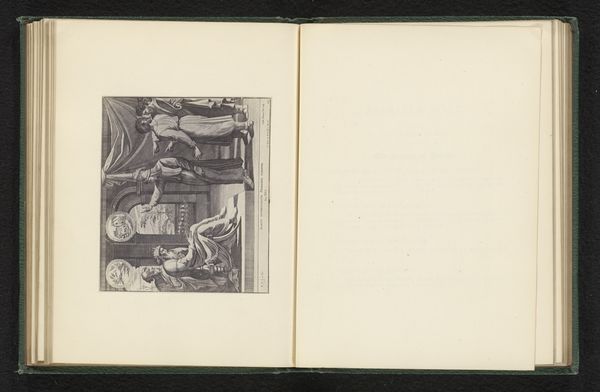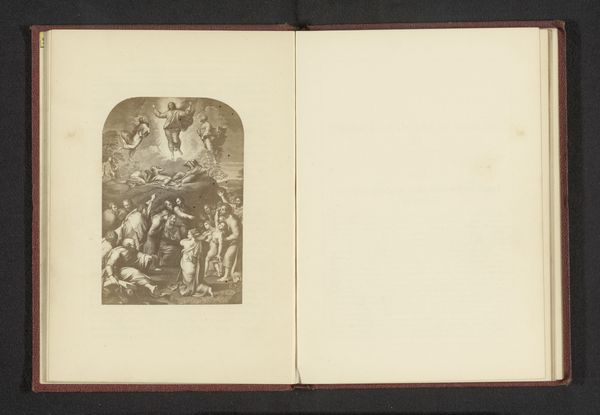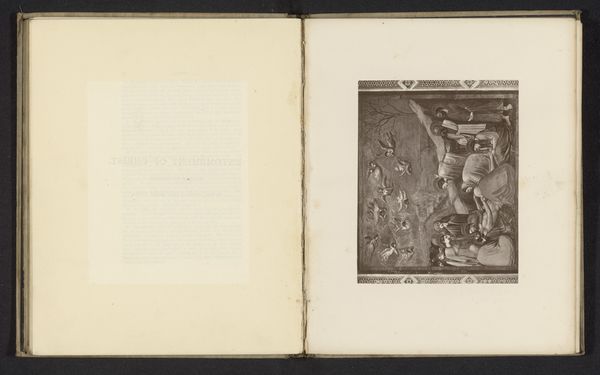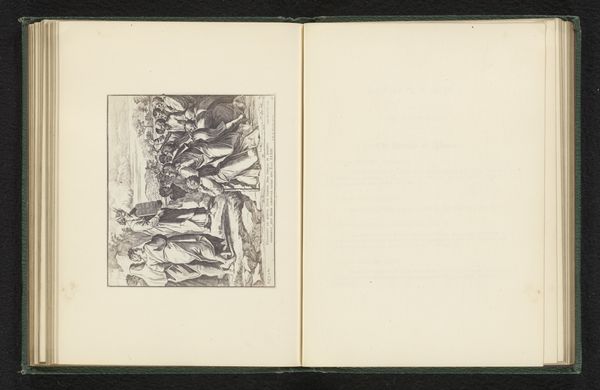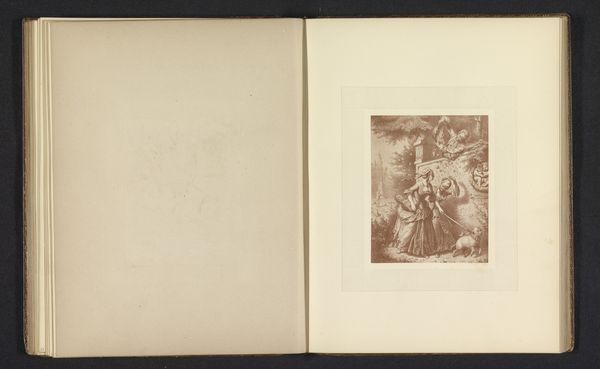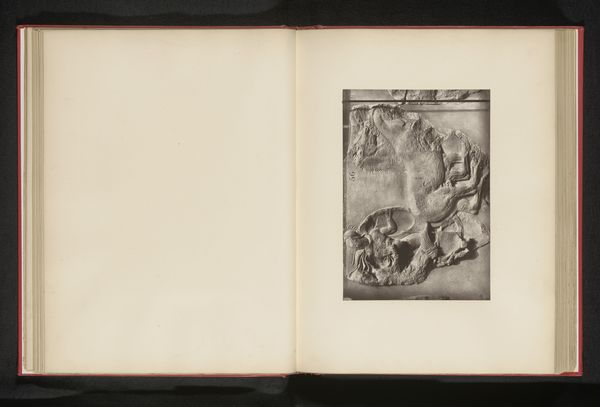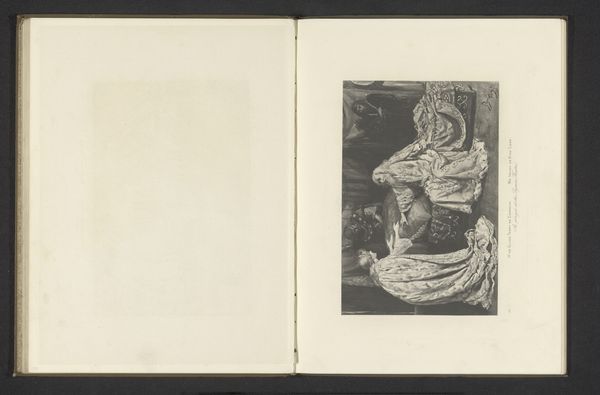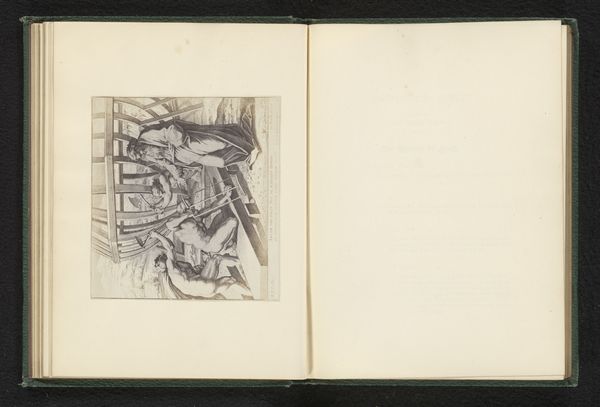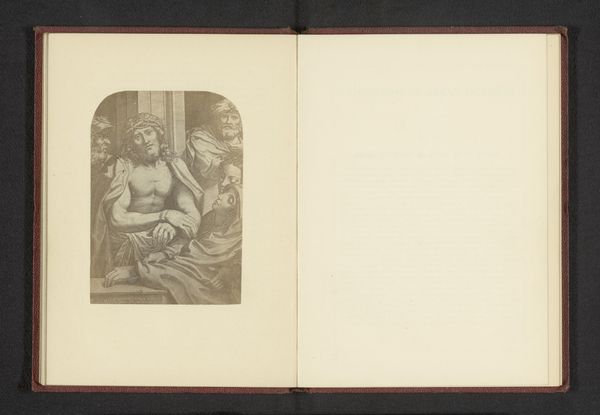
Fotoreproductie van een prent naar een tekening door Rafaël van Adam en Eva buiten het paradijs before 1868
0:00
0:00
drawing, print, paper, ink, engraving
#
drawing
#
allegory
#
pen drawing
# print
#
landscape
#
figuration
#
paper
#
11_renaissance
#
ink
#
history-painting
#
nude
#
engraving
Dimensions: height 105 mm, width 113 mm
Copyright: Rijks Museum: Open Domain
Editor: Here we have "Fotoreproductie van een prent naar een tekening door Rafaël van Adam en Eva buiten het paradijs," a print of a drawing, made before 1868. The starkness of the ink on paper, the vulnerable figures, evokes a deep sense of loss. What do you make of this piece? Curator: As a reproduction, this work isn’t necessarily about Raphael's artistic genius. Rather, it is about the proliferation of imagery and its relationship to production and accessibility. Consider the labour involved: the original drawing, the printmaking, the dissemination. Editor: So you're saying the material process is the main focus? How does that shift our understanding? Curator: Precisely! Think about who could afford original artwork versus prints. This mass production democratizes, in a way, the narrative of Adam and Eve, making it accessible beyond elite circles. But consider what's lost: the immediate trace of the artist’s hand, for instance. It’s a trade-off. The shift in scale too alters the viewing experience. It ceases to be a private moment with a unique image, it becomes a shared cultural touchstone circulated via relatively cheap commodities. Editor: I hadn't considered the democratizing aspect before. The print allows more people access to this renaissance idea. It seems there's something to be said for how the mode of production here alters how a culture can consume an image and it's embedded meanings. Curator: Exactly! Now you're thinking like a materialist. What other ways do you think mass reproduction might influence an artwork’s reception? Editor: Seeing the piece through a material lens, thinking about the who, how, and why of its production really opens it up to different angles of analysis, beyond purely aesthetic.
Comments
No comments
Be the first to comment and join the conversation on the ultimate creative platform.
